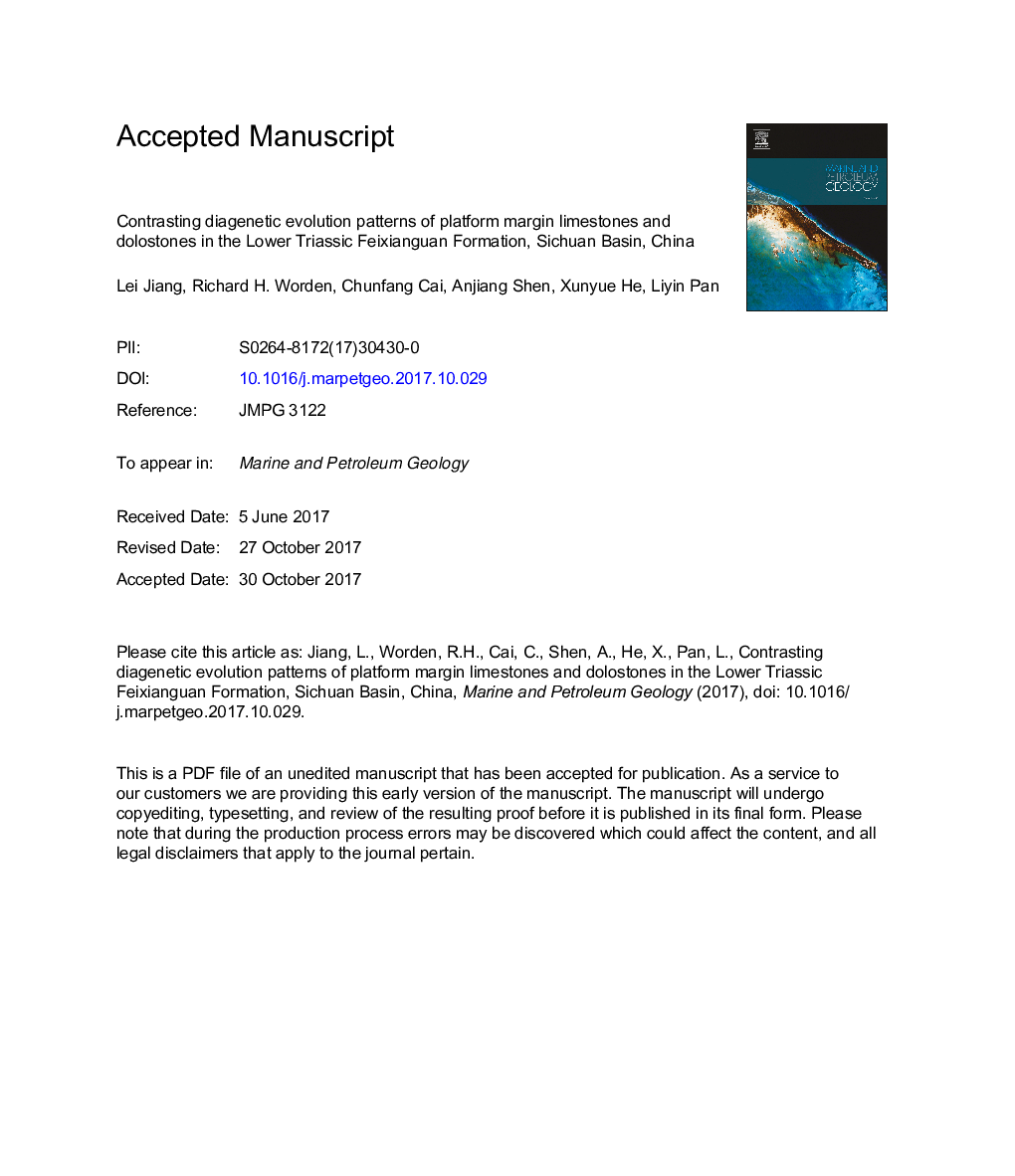| کد مقاله | کد نشریه | سال انتشار | مقاله انگلیسی | نسخه تمام متن |
|---|---|---|---|---|
| 8909129 | 1637133 | 2018 | 55 صفحه PDF | دانلود رایگان |
عنوان انگلیسی مقاله ISI
Contrasting diagenetic evolution patterns of platform margin limestones and dolostones in the Lower Triassic Feixianguan Formation, Sichuan Basin, China
دانلود مقاله + سفارش ترجمه
دانلود مقاله ISI انگلیسی
رایگان برای ایرانیان
کلمات کلیدی
موضوعات مرتبط
مهندسی و علوم پایه
علوم زمین و سیارات
زمین شناسی اقتصادی
پیش نمایش صفحه اول مقاله

چکیده انگلیسی
Deeply-buried carbonate-reservoirs from the Lower Triassic Feixianguan Formation in the Sichuan Basin of China host extensive natural gas resources. These reservoirs are predominantly found in oolitic shoals, with the reservoir quality of dolomitized zones being higher than that of undolomitized limestone counterparts. Here we present a combination of petrographic, isotopic, fluid inclusion, and quantitative porosity data in order to understand and predict the diagenetic processes that have impacted the reservoir quality of dolostones and limestones. The porosity of limestones has been reduced to â¼7.5% due to calcite cementation, whereas the porosity in oolitic dolostones is not cemented with calcite and typically has â¼23.5% porosity. Dolomitization and concurrent early-diagenetic gypsum growth played crucial roles on the development and preservation of high porosity in the oolitic dolostone, first by stabilizing the rock fabric to inhibit loss of porosity during burial, and secondly through the generation of new porosity by dissolution of carbonate and anhydrite. A negative shift of δ18O and salinity values (<3.5 wt. %) measured from fluid inclusions in diagenetic calcite cement in limestones suggest that diagenesis associated with meteoric water played a key role in destroying limestone reservoir quality. Early oil charge seems to have had a positive effect on carbonate reservoir quality in the dolostones, since oil emplacement inhibited calcite cementation. Subsequently, thermochemical sulfate reduction (TSR) occurred, predominantly in the dolostones, as shown by TSR calcite cement with highly negative δ13C values (â¼â20â° VPDB) and δ18O (â¼â10â° VPDB) together with elevated calcite precipitation temperatures (>110 °C). It is likely that TSR was responsible for the formation of enlarged dissolution vugs that increased porosity by â¼2% in dolostones due to: i) anhydrite dissolution, ii) production of significant amounts of water resulting in formation water undersaturated with respect to calcite and dolomite, iii) generation of H2S, and CO2, and the consequent reaction of H2S with the siderite (FeCO3) component in calcite and dolomite. This study demonstrates the importance of diagenesis in the formation of deeply-buried, high-quality reservoirs in ooid-dominated grainstones influenced by the presence of evaporites. Our results should be useful for guiding future exploration and reservoir developments in similar paleogeographic and diagenetic settings.
ناشر
Database: Elsevier - ScienceDirect (ساینس دایرکت)
Journal: Marine and Petroleum Geology - Volume 92, April 2018, Pages 332-351
Journal: Marine and Petroleum Geology - Volume 92, April 2018, Pages 332-351
نویسندگان
Lei Jiang, Richard H. Worden, Chun Fang Cai, An Jiang Shen, Xun Yue He, Li Yin Pan,